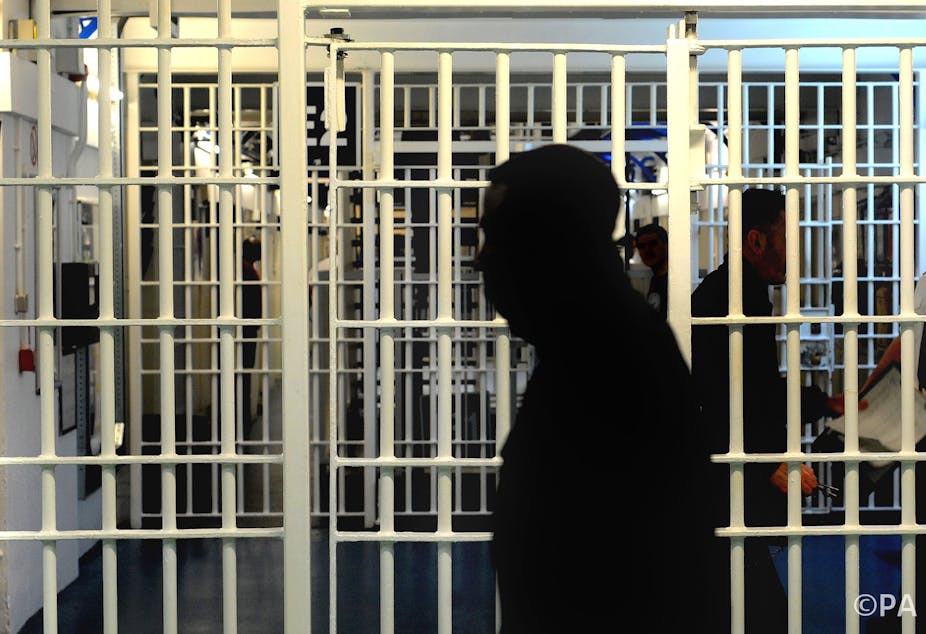Overcrowding, staff cuts and a growing drugs problem have all created a toxic mix in English and Welsh prisons. So it’s hardly surprising there’s been a surge of violence on an unprecedented scale.
In 2015, there was a 31% increase in serious assault incidents in prisons according to a new report from the Prisons and Probation Ombudsman, which examined the murders of six prisoners in 2015-16 in England and Wales.
The crisis in English and Welsh prisons is a longstanding one. In 2014, the then-chief inspector of prisons, Nick Hardwick, warned of a “political and policy failure” in prisons. A Prison Reform Trust report showed a system under immense strain with high levels of overcrowding, fewer staff, worsening safety, and fewer opportunities for rehabilitation.
In February 2016, the former prime minister, David Cameron, announced a new set of prison reforms with the spotlight firmly on prison education. And although these reforms were welcomed by many, nothing was mentioned about the issues raised by Hardwick. Many reformers believed that the government hadn’t gone far enough. They argue that while education was seen as an essential part of cutting re-offending, it did not solve the ongoing crisis of overcrowding, staff cuts and an increase in violence and homicide.
Following Cameron’s departure from office in June, the new justice secretary Liz Truss refused to guarantee to a committee of MPs in September that the reforms would go ahead.
But as politicians hesitate prisons remain in crisis, toxic with drugs and violence, overcrowded and overseen by fewer staff to manage the problem. There are also rapidly growing numbers of old, sick and disabled people in prison aged over 50, with people over 60 the fastest growing age group in the prison population between 2002 and 2014.
Don’t imprison people unnecessarily
In his report on the recent prison violence, the prison ombudsman reported that while there are lessons to be learned about improving safety after the recent murders, there is no easy solution. Yet it seems to me that there is a course of action that could help alleviate the problem: remove people from prison who don’t need to be there.
In 2012, the system of imprisoning people for their own protection – known as IPP – was abolished. These prisoners are serving an indefinite sentence of imprisonment for public protection, with no release date – equivalent to a life sentence. But four years after the sentence was scrapped, there are still around 4,000 IPP prisoners waiting to be released.
In theory, IPP prisoners can stay in prison for the rest of their lives. But such sentences are not reserved for violent crimes – thousands are serving IPP sentences for crimes such as affray, or group fighting. It is unique to England and Wales, which has more than three times as many people in prison serving an indeterminate sentence than France, Germany and Italy. This is partly because the judges who imposed the sentences have worried about possible backlash for releasing someone who “may” commit another violent crime.
But almost every prisoner who received an IPP sentence has now completed their prison term. Despite this they remain uncertain when they will ever be released.
If they had received the equivalent fixed sentence for their offence, all of them would have been released back into the community already which would have decreased the prison population. Understandably, however, some of those who have remained incarcerated may be still deemed to be a risk.
Crowding in
In 2015, the Prison Reform trust reported: “An explosion in the use of indeterminate sentences and the increased use of long determinate sentences are key drivers behind the near doubling of prison numbers in the past two decades.”
It explained that changes in prison policy and legislation have had a huge impact of the current surge of overcrowding which has pushed mandatory year-long supervision for short termers, mandatory minimum custodial sentences for those who commit a second offence of knife possession and restrictions of the use of release on temporary licence. Another contributory factor to the growing prison population is an increase in more serious and historic cases such as sexual offences going before courts as more victims of such crimes gain the courage to come forward.
There is also a wider story here about women’s prisons, with the majority of women prisoners locked up for a short period for non-violent offences. Most women in prison have different needs to their male counterparts, such as being closer to their children and families. Because there are only 13 women’s prisons, visits are much more difficult.
It’s worth acknowledging that even if all the IPP prisoners were to be released it would barely put a dent in the bursting prison population. But the role of prison has become blurred with some residents not needing to be there. Part of the solution to this overcrowding seems clear – but it is not so clear why the government won’t take radical action to rectify it.

